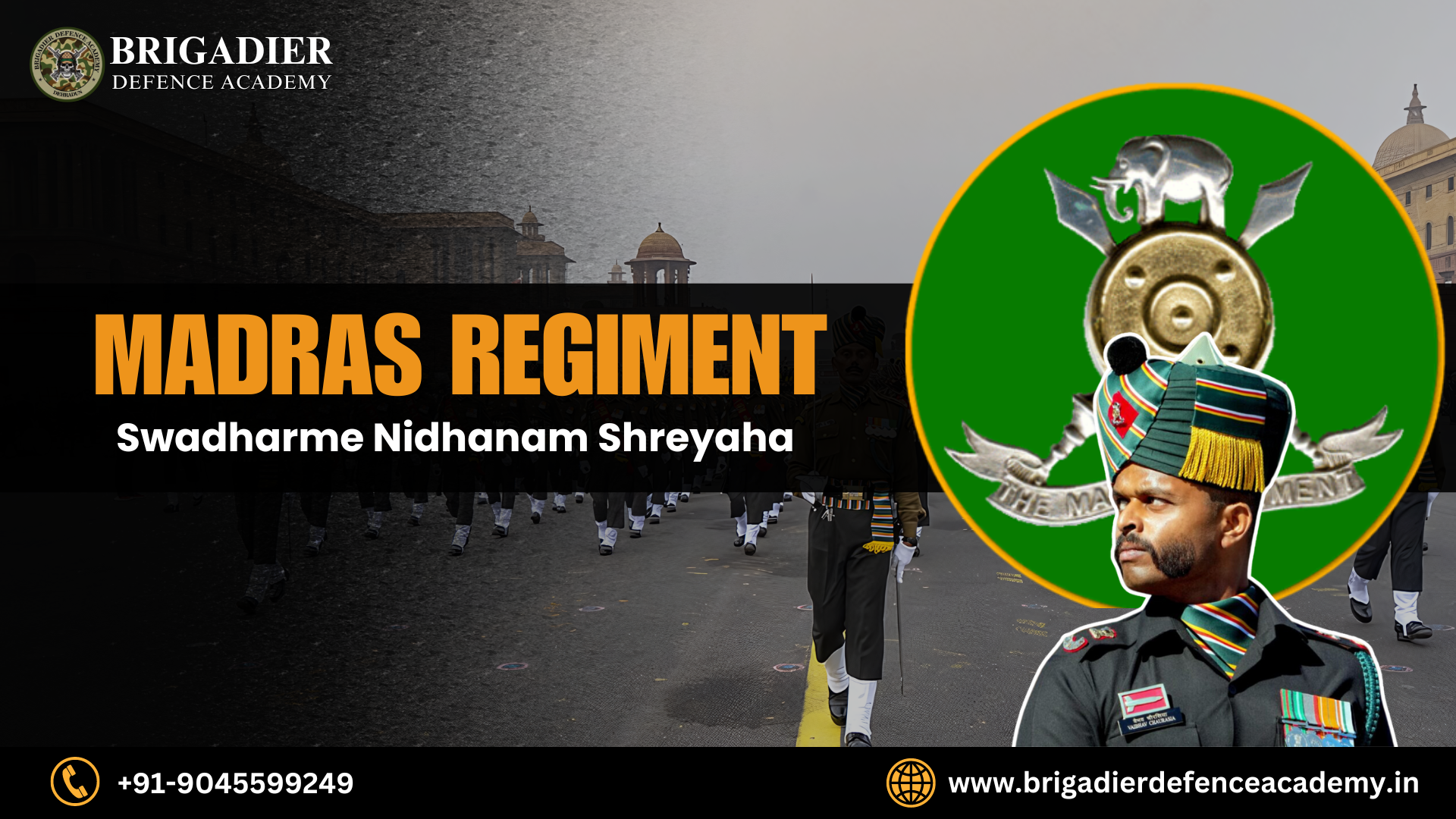The Madras Regiment, one of the oldest regiments in the Indian Army, has a rich history that dates back to the 18th century. With its origins rooted in the colonial era, the regiment has played a pivotal role in shaping the military history of India. Known for its bravery, discipline, and esprit de corps, the Madras Regiment stands as a testament to the valor and dedication of its soldiers.
Origins and Early History of Madras regiment
The Madras Regiment traces its lineage to the East India Company’s army, specifically to the units formed in the southern part of India. The early formation of the regiment can be attributed to the need for a disciplined and reliable force to protect the interests of the East India Company in the region. The soldiers were primarily recruited from the Tamil-speaking population of the Madras Presidency, which encompassed parts of modern-day Tamil Nadu, Andhra Pradesh, Karnataka, and Kerala.
The regiment’s official formation is often dated to 1758, making it one of the oldest regiments in the Indian Army. During its early years, the Madras Regiment participated in numerous military campaigns, including the Carnatic Wars, the Anglo-Mysore Wars, and the Anglo-Maratha Wars. These conflicts were crucial in establishing British dominance in India and showcased the regiment’s fighting prowess.
The Role in the British Indian Army
Throughout the 19th century, the Madras Regiment continued to serve with distinction in various campaigns. The regiment’s soldiers were known for their loyalty and courage, traits that earned them respect from both their British superiors and their adversaries. One of the most notable engagements during this period was the regiment’s involvement in the Siege of Seringapatam in 1799, which marked the end of Tipu Sultan’s rule in Mysore.
During the First and Second World Wars, the Madras Regiment was deployed in various theaters of war. In World War I, the regiment saw action in Mesopotamia, Palestine, and Africa. World War II saw the regiment participating in the Burma Campaign, where it played a crucial role in the Allied victory against the Japanese forces. The bravery and determination displayed by the soldiers during these conflicts cemented the regiment’s reputation as a formidable fighting force.
Post-Independence Era
With India’s independence in 1947, the Madras Regiment became an integral part of the Indian Army. The regiment’s structure and composition underwent significant changes to reflect the new realities of an independent nation. Despite these changes, the regiment retained its traditions and ethos, which continue to guide its soldiers today.
The post-independence period saw the Madras Regiment participating in several key military operations. During the Indo-Pakistani Wars of 1947-48, 1965, and 1971, the regiment displayed exceptional bravery and professionalism. The regiment also played a vital role in peacekeeping operations and counter-insurgency missions, contributing to maintaining stability and security in various regions of India.
Regimental Traditions and Culture
The Madras Regiment is renowned for its rich traditions and cultural heritage. The regiment’s motto, “Swadharme Nidhanam Shreyah” (It is a glory to die doing one’s duty), reflects the unwavering commitment of its soldiers to their duty and country. The regimental insignia, which features a leaping tiger, symbolizes strength, courage, and agility.
The regiment’s traditions are deeply rooted in the customs and practices of the regions from which it recruits its soldiers. Festivals, religious ceremonies, and cultural events are an integral part of regimental life, fostering a sense of camaraderie and unity among the soldiers. The regimental center, located in Wellington, Tamil Nadu, serves as a hub for training and nurturing the next generation of soldiers.
Honours and Awards
Over the centuries, the Madras Regiment has been the recipient of numerous honors and awards, both at the individual and unit levels. The regiment’s soldiers have been decorated for their bravery and gallantry in various conflicts, earning medals such as the Param Vir Chakra, Maha Vir Chakra, and Vir Chakra.
One of the most celebrated heroes of the regiment is Lance Naik Karam Singh, who was awarded the Param Vir Chakra for his extraordinary bravery during the Indo-Pakistani War of 1947-48. His actions in the Battle of Tithwal, where he led his men with exceptional courage and determination, are etched in the annals of the regiment’s history.
Modern-Day Role and Challenges
In the contemporary era, the Madras Regiment continues to evolve to meet the challenges of modern warfare. The regiment’s soldiers are trained in a wide range of skills, including counter-terrorism, jungle warfare, and peacekeeping operations. The regiment has also embraced technological advancements, incorporating modern weaponry and communication systems to enhance its operational capabilities.
The Madras Regiment’s commitment to excellence is evident in its participation in joint military exercises with other nations, contributing to international peace and security. The regiment’s soldiers are also involved in humanitarian missions, disaster relief operations, and community development projects, reflecting their dedication to serving the nation in diverse capacities.
The Madras Regiment stands as a proud symbol of India’s military heritage. Its storied history, marked by acts of valor and sacrifice, serves as an inspiration to future generations of soldiers. The regiment’s unwavering commitment to duty, honor, and country ensures that it remains a cornerstone of the Indian Army. As the Madras Regiment continues to evolve and adapt to the changing dynamics of modern warfare, its legacy of courage and tradition endures, embodying the spirit of service and sacrifice that defines the Indian Army.







